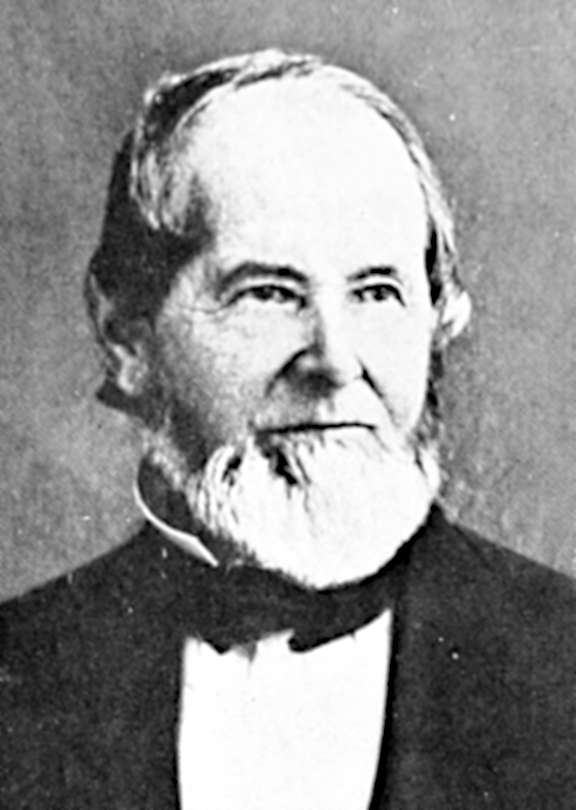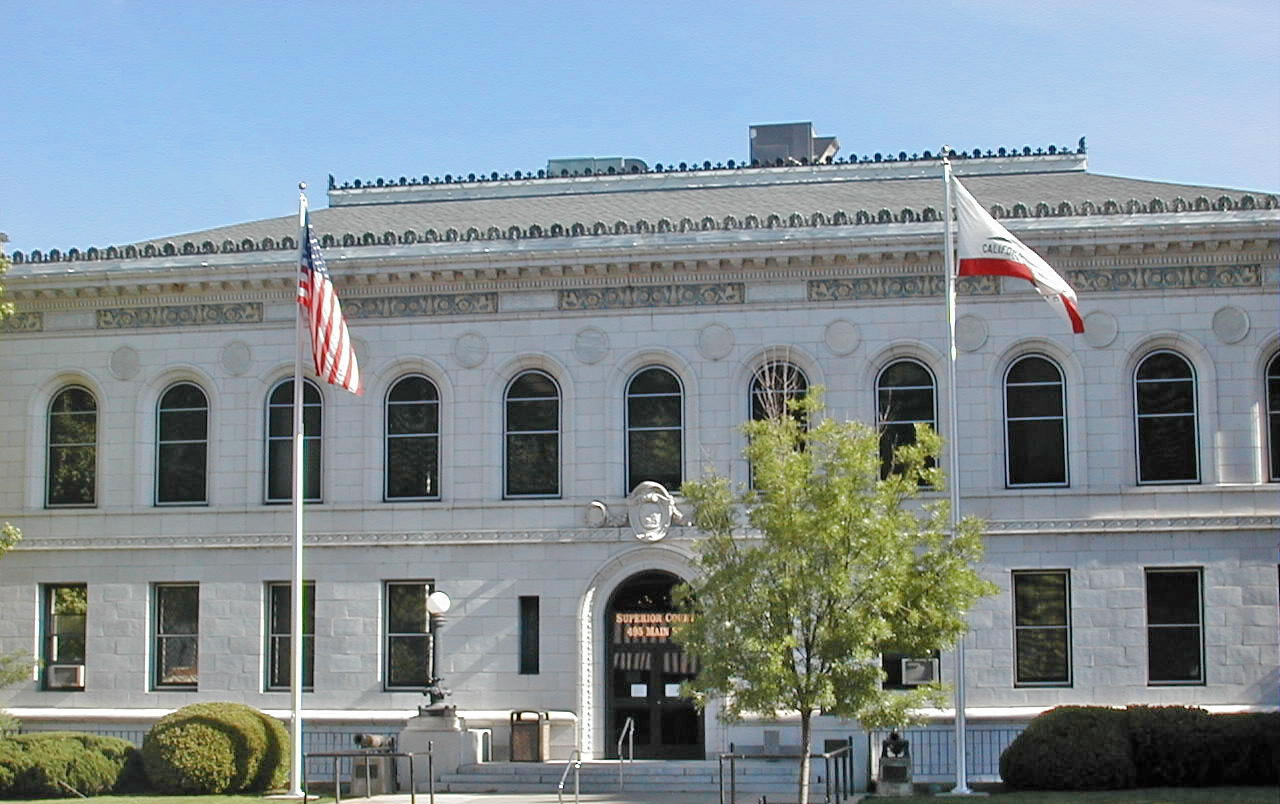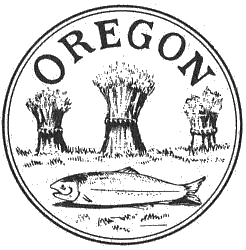|
Osborne Russell
Osborne Russell (19 June 1814 – 1 May 1884) was a mountain man and politician who helped form the government of the U.S. state of Oregon. He was born in Maine. Early life Osborne Russell was born 19 June 1814, in the village of Bowdoinham, Maine. He was one of nine children in the farming family of George G. and Eleanor (Power) Russell. At age 16, Russell ran away for a life at sea, but quickly gave up that career by deserting his ship at New York. Afterwards he spent three years in the employ of the Northwest Fur Trapping and Trading Company, which operated in Wisconsin and Minnesota. Russell first came to the Oregon Country in 1834 as a member of Nathaniel J. Wyeth's second expedition where Russell joined Nathaniel Wyeth's Columbia River Fishing and Trading Company expedition to the Rocky Mountains. The company was contracted to deliver $3,000 worth of supplies and trade goods to Milton Sublette and Thomas Fitzpatrick of the Rocky Mountain Fur Company for the 1834 Re ... [...More Info...] [...Related Items...] OR: [Wikipedia] [Google] [Baidu] |
Provisional Government Of Oregon
The Provisional Government of Oregon was a popularly elected settler government created in the Oregon Country, in the Pacific Northwest region of North America. Its formation had been advanced at the Champoeg Meetings since February 17, 1841, and it existed from May 2, 1843 until March 3, 1849, and provided a legal system and a common defense amongst the mostly American pioneers settling an area then inhabited by the many Indigenous Nations. Much of the region's geography and many of the Natives were not known by people of European descent until several exploratory tours were authorized at the turn of the 18th and 19th centuries. The Organic Laws of Oregon were adopted in 1843 with its preamble stating that settlers only agreed to the laws "until such time as the United States of America extend their jurisdiction over us". According to a message from the government in 1844, the rising settler population was beginning to flourish among the "savages", who were "the chief obstruct ... [...More Info...] [...Related Items...] OR: [Wikipedia] [Google] [Baidu] |
Green River (Colorado River Tributary)
The Green River, located in the western United States, is the chief tributary of the Colorado River. The watershed of the river, known as the Green River Basin, covers parts of the U.S. states of Wyoming, Utah, and Colorado. The Green River is long, beginning in the Wind River Mountains of Wyoming and flowing through Wyoming and Utah for most of its course, except for a short segment of in western Colorado. Much of the route traverses the arid Colorado Plateau, where the river has carved some of the most spectacular canyons in the United States. The Green is slightly smaller than Colorado when the two rivers merge but typically carries a larger load of silt. The average yearly mean flow of the river at Green River, Utah is per second. The status of the Green River as a tributary of the Colorado River came about mainly for political reasons. In earlier nomenclature, the Colorado River began at its confluence with the Green River. Above the confluence, Colorado was called the ... [...More Info...] [...Related Items...] OR: [Wikipedia] [Google] [Baidu] |
Yellowstone National Park
Yellowstone National Park is an American national park located in the western United States, largely in the northwest corner of Wyoming and extending into Montana and Idaho. It was established by the 42nd U.S. Congress with the Yellowstone National Park Protection Act and signed into law by President Ulysses S. Grant on March 1, 1872. Yellowstone was the first national park in the U.S. and is also widely held to be the first national park in the world. The park is known for its wildlife and its many geothermal features, especially the Old Faithful geyser, one of its most popular. While it represents many types of biomes, the subalpine forest is the most abundant. It is part of the South Central Rockies forests ecoregion. While Native Americans have lived in the Yellowstone region for at least 11,000 years, aside from visits by mountain men during the early-to-mid-19th century, organized exploration did not begin until the late 1860s. Management and control of the park ... [...More Info...] [...Related Items...] OR: [Wikipedia] [Google] [Baidu] |
Placerville, California
Placerville (, ; formerly Old Dry Diggings, Dry Diggings, and Hangtown) is a city in and the county seat of El Dorado County, California. The population was 10,747 as of the 2020 census, up from 10,389 as of the 2010 census. It is part of the Sacramento–Arden-Arcade– Roseville Metropolitan Statistical Area. History A former Maidu settlement called Indak was located at the site of the town. After the discovery of gold at Sutter's Mill in nearby Coloma, California, by James W. Marshall in 1848 sparked the California Gold Rush, the small town now known as Placerville was known as Dry Diggin's after the manner in which the miners moved cartloads of dry soil to run water to separate the gold from the soil. Later in 1849, the town earned its most common historical name, "Hangtown", because of the numerous hangings that had occurred there. However, there is debate on exactly how many lynchings occurred in the town. The town had no police force (in 1849) and five immigra ... [...More Info...] [...Related Items...] OR: [Wikipedia] [Google] [Baidu] |
Executive Committee (Oregon Territory)
An Executive Committee was the title of a three-person committee which served as the executive Branch of the Provisional Government of Oregon in the disputed Oregon Country. This arrangement was announced on July 5, 1843, after three months of study by the Provisional Legislature at Champoeg. Powers The executive committee was empowered to grant reprieves and pardons, recommend legislation, and call out the militia. : Embracing an Account of the Original Discoveries on the Pacific Coast of North America, Volume 1, (1889), p. 24 ... [...More Info...] [...Related Items...] OR: [Wikipedia] [Google] [Baidu] |
Oregon Blue Book
The ''Oregon Blue Book'' is the official directory and fact book for the U.S. state of Oregon prepared by the Oregon Secretary of State and published by the Office of the Secretary's Archives Division. The ''Blue Book'' comes in both print and online editions. The Oregon Revised Statutes require the Secretary of State to publish the print edition "biennially on or about February 15 of the same year as the regular sessions of the Legislative Assembly," which are during odd-numbered years; it has been so published since 1911. The online edition is updated regularly. Contents The book contains information on the state, city, county, and federal governments in Oregon, educational institutions, finances, the economy, resources, population figures and demographics. The 1919 edition contained a "statement of registered motor vehicles, chauffeurs, and dealers from 1905 to 1919", and "a general summary of in the taxable property in Oregon from 1858 to 1918". History Secretary of State ... [...More Info...] [...Related Items...] OR: [Wikipedia] [Google] [Baidu] |
Champoeg Meetings
The Champoeg Meetings were the first attempts at formal governance by European-American and French Canadian pioneers in the Oregon Country on the Pacific Northwest coast of North America. Between 1841 and 1843, a series of public councils was held at Champoeg, a settlement on the French Prairie of the Willamette River valley in present-day Marion County, Oregon, and at surrounding settlements.Carey, Charle''History of Oregon.''Chicago: The Pioneer Historical Publishing Co. 1922 The meetings were organized by newly arrived settlers as well as Protestant missionaries from the Methodist Mission and Catholic Jesuit priests from Canada. Since the first decade of the 19th century, a small but growing number of pioneers had settled in the Oregon Country, mostly to pursue business interests in the North American fur trade. Despite its economic value, the region was so vast and remote that it was left unorganized for several decades, with no European-American government in place to set law ... [...More Info...] [...Related Items...] OR: [Wikipedia] [Google] [Baidu] |
Elijah White
Dr. Elijah White (1806–1879) was a missionary and agent for the United States government in Oregon Country during the mid-19th century. A trained physician from New York State, he first traveled to Oregon as part of the Methodist Mission in the Willamette Valley. He returned to the region after a falling-out with mission leader Jason Lee as the leader of one of the first large wagon trains across the Oregon Trail and as a sub-Indian agent of the federal government. In Oregon he used his authority to regulate affairs between the Natives and settlers, and even between settlers. White left the region in 1845 as a messenger for the Provisional Government of Oregon to the United States Congress, returning in 1850 before leaving again for California in the early 1860s. Early life White was born in New York, in 1806.Corning, Howard M. ''Dictionary of Oregon History''. Binfords & Mort Publishing, 1956. There he received his education, including medical training at a school of medicine ... [...More Info...] [...Related Items...] OR: [Wikipedia] [Google] [Baidu] |
Hudson's Bay Company
The Hudson's Bay Company (HBC; french: Compagnie de la Baie d'Hudson) is a Canadian retail business group. A fur trading business for much of its existence, HBC now owns and operates retail stores in Canada. The company's namesake business division is Hudson's Bay, commonly referred to as The Bay ( in French). After incorporation by English royal charter in 1670, the company functioned as the ''de facto'' government in parts of North America for nearly 200 years until the HBC sold the land it owned (the entire Hudson Bay drainage basin, known as Rupert's Land) to Canada in 1869 as part of the Deed of Surrender, authorized by the Rupert's Land Act 1868. At its peak, the company controlled the fur trade throughout much of the English- and later British-controlled North America. By the mid-19th century, the company evolved into a mercantile business selling a wide variety of products from furs to fine homeware in a small number of sales shops (as opposed to trading posts) acros ... [...More Info...] [...Related Items...] OR: [Wikipedia] [Google] [Baidu] |
Rocky Mountains
The Rocky Mountains, also known as the Rockies, are a major mountain range and the largest mountain system in North America. The Rocky Mountains stretch in straight-line distance from the northernmost part of western Canada, to New Mexico in the southwestern United States. Depending on differing definitions between Canada and the U.S., its northern terminus is located either in northern British Columbia's Terminal Range south of the Liard River and east of the Trench, or in the northeastern foothills of the Brooks Range/ British Mountains that face the Beaufort Sea coasts between the Canning River and the Firth River across the Alaska-Yukon border. Its southernmost point is near the Albuquerque area adjacent to the Rio Grande rift and north of the Sandia–Manzano Mountain Range. Being the easternmost portion of the North American Cordillera, the Rockies are distinct from the tectonically younger Cascade Range and Sierra Nevada, which both lie farther to its west. The ... [...More Info...] [...Related Items...] OR: [Wikipedia] [Google] [Baidu] |
American Fur Company
The American Fur Company (AFC) was founded in 1808, by John Jacob Astor, a German immigrant to the United States. During the 18th century, furs had become a major commodity in Europe, and North America became a major supplier. Several British companies, most notably the North West Company and the Hudson's Bay Company, were eventual competitors against Astor and capitalized on the lucrative trade in furs. Astor capitalized on anti-British sentiments and his commercial strategies to become one of the first trusts in American business and a major competitor to the British commercial dominance in North American fur trade. Expanding into many former British fur-trapping regions and trade routes, the company grew to monopolize the fur trade in the United States by 1830, and became one of the largest and wealthiest businesses in the country. Astor planned for several companies to function across the Great Lakes, the Great Plains and the Oregon Country to gain control of the North Am ... [...More Info...] [...Related Items...] OR: [Wikipedia] [Google] [Baidu] |
Jim Bridger
James Felix "Jim" Bridger (March 17, 1804 – July 17, 1881) was an American mountain man, trapper, Army scout, and wilderness guide who explored and trapped in the Western United States in the first half of the 19th century. He was known as Old Gabe in his later years.Gard, Wayne. “RUGGED MOUNTAIN MAN.” Southwest Review, vol. 48, no. 3, 1963, pp. 305–305. JSTOR, www.jstor.org/stable/43471161. Accessed 28 Apr. 2021. He was from the Bridger family of Virginia, English immigrants who had been in North America since the early colonial period. Bridger was part of the second generation of American mountain men and pathfinders who followed the Lewis and Clark Expedition of 1804 and became well known for participating in numerous early expeditions into the western interior as well as mediating between Native American tribes and westward-migrating European-American settlers. By the end of his life, he had earned a reputation as one of the foremost frontiersmen in the American Ol ... [...More Info...] [...Related Items...] OR: [Wikipedia] [Google] [Baidu] |







